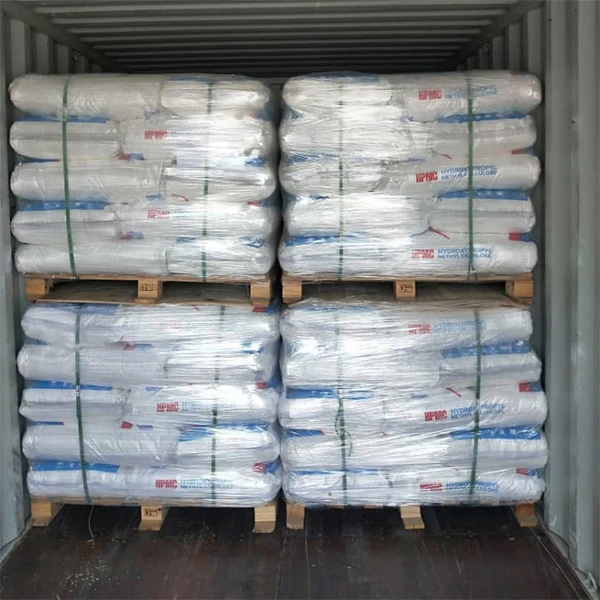Hydroxypropyl Methyl Cellulose (HPMC) A Versatile Polymer for Multiple Applications
Hydroxypropyl Methyl Cellulose (HPMC) is a cellulose derivative that has gained popularity across various industries due to its unique physical and chemical properties. This water-soluble polymer is produced by the etherification of cellulose with propylene oxide and methyl chloride, resulting in a product that exhibits excellent thickening, binding, film-forming, and emulsifying properties. The versatility of HPMC makes it an essential ingredient in industries ranging from pharmaceuticals to food production, construction, and cosmetics.
Pharmaceutical Applications
In the pharmaceutical sector, HPMC is widely used as a binding agent in tablet formulations. Its ability to form gels upon hydration provides a controlled release of active ingredients, making it an ideal choice for sustained-release and matrix tablets. The viscosity of HPMC can be adjusted by altering the molecular weight and substitution degree, allowing formulators to tailor drug release profiles to meet specific therapeutic needs. Additionally, HPMC is often employed as a coating agent, enhancing the stability and bioavailability of pharmaceuticals.
HPMC's biocompatibility is another reason for its popularity in the pharmaceutical industry. It is non-toxic and does not interact negatively with drug substances, making it suitable for use in a variety of pharmaceutical formulations, including ophthalmic solutions and injectable drugs. Moreover, it is also used in the development of hydrogels for tissue engineering and regenerative medicine due to its favorable properties for cell adhesion and growth.
Food Industry Applications
In the food industry, HPMC serves as a versatile food additive, commonly used as a thickener, stabilizer, and emulsifier in various products. Its ability to improve texture and mouthfeel makes it particularly valuable in the production of sauces, dressings, and dairy products. In gluten-free baking, HPMC is especially beneficial as it helps to retain moisture and improve the overall structure of baked goods, compensating for the lack of gluten.
Furthermore, HPMC is recognized for its ability to form gels and foams, which can enhance the sensory qualities of food products. It is also used to encapsulate flavors and nutrients, providing protection against oxidation and improving shelf life. These properties contribute to the trend of using plant-based and clean-label ingredients in food production, making HPMC a preferred choice among manufacturers seeking to meet consumer demands for safety and quality.
hydroxypropyl methyl cellulose(hpmc)

Construction Industry Applications
The construction industry has also harnessed the benefits of HPMC in various applications, particularly as an additive in cement-based materials. When mixed with water, HPMC enhances the workability and adhesion properties of mortars, plasters, and tile adhesives. It improves the consistency and performance of these materials, allowing for better application on surfaces while minimizing slippage during installation.
Furthermore, HPMC contributes to the water retention of cement mixtures, ensuring adequate hydration and reducing the risk of cracking during the curing process. This property is particularly important in the construction of high-performance and durable structures. The use of HPMC in construction materials has become increasingly important as the industry shifts toward more sustainable and eco-friendly building practices.
Cosmetic and Personal Care Applications
In the realm of cosmetics and personal care products, HPMC is utilized for its thickening and emulsion stability properties. It is commonly found in lotions, creams, and gels, where it improves texture and provides a pleasant sensory experience. Additionally, HPMC's film-forming abilities allow it to create a protective barrier on the skin, enhancing moisture retention and delivering a smooth application.
HPMC is also used in hair care products, where it helps to improve the texture and manageability of hair. Its ability to provide a lightweight hold without stiffness makes it a favored ingredient in styling gels and sprays. Given its versatility, HPMC aligns well with the growing demand for multifunctional ingredients in personal care formulations.
Conclusion
Hydroxypropyl Methyl Cellulose (HPMC) stands out as a multifunctional polymer that serves a diverse range of applications across multiple industries. Its unique properties of water solubility, biocompatibility, and thickening abilities make it indispensable in pharmaceuticals, food production, construction, and cosmetics. As industries increasingly seek sustainable and effective solutions, the demand for HPMC is likely to continue growing, reinforcing its position as a vital ingredient in modern formulations. With ongoing research and development, the potential applications of HPMC may expand even further, paving the way for innovative products that enhance quality of life.
-
Rdp Powder: Key Considerations for Wholesalers in the Building Materials IndustryNewsJul.08,2025
-
Key Considerations for Wholesalers: Navigating the World of Hpmc - Based ProductsNewsJul.08,2025
-
Hpmc Detergent: Key Considerations for WholesalersNewsJul.08,2025
-
Key Considerations for Wholesalers: China Hpmc For Tile Adhesive, Coating Additives, Concrete Additives, and MoreNewsJul.08,2025
-
Crucial Considerations for Wholesalers: Navigating the World of Construction MaterialsNewsJul.08,2025
-
Key Considerations for Wholesalers Sourcing Additive For Cement, Additive For Concrete, Additive For Putty from Additive Manufacturer Shijiazhuang Gaocheng District Yongfeng Cellulose Co., Ltd.NewsJul.08,2025




